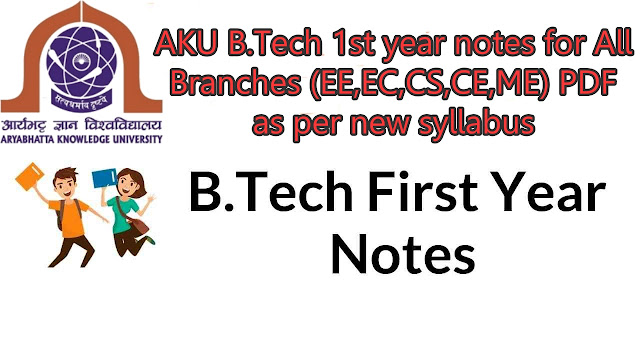NPTEL Public Speaking Assignment 4 Answers 2023 (July- Oct) - week 4
The NPTEL Public Speaking Assignment 4 for 2023 (July-Oct) delves into the essence of public speaking as a performative act. This article takes you on a journey through the intricacies of public speaking, equipping you with essential knowledge to ace your assignment while exploring the fascinating realm of communication.
NPTEL Public Speaking Assignment 4 Answers 2023 (July- Oct) including: Public Speaking as a Performative Act
NOTE:- Answers will be updated shortly and it will be notified in our Youtube & Telegram Group. So Join Now
Digressions are surprise cards for any speech.
Soliloquy is a literary device used mostly in speeches.
The ancient Tamil classic, Thiruvalluvar’s Shruthi, contains two chapters on the virtues of good speech.
Digression is different from distraction.
Conversation is a type of Activism.
In Europe and Greece, dramas had a religious origin.
Miracle plays depicted the martyrdom of saints.
Dramatic Monologue is a poem written in the form of a speech of an individual character. It comprises the narrator’s sense of her/his story and is a remarkable psychological insight into her/his character.
Dialogue is “the conversational element of literary or dramatic composition.”
Peers are required to avail learning experiences that invoke a quest for knowledge and capture curiosity and interest.
Please note that some of the questions might be incomplete or have missing options, but I've provided the correct answers based on the information provided.
Unveiling the Core of Public Speaking
Public speaking is more than just conveying information – it's an art form that engages, informs, and inspires. As a performative act, it combines verbal expression, body language, and emotional resonance to create a compelling narrative that captivates the audience's attention. This assignment dives deep into understanding the nuances of this act and how it influences perceptions.
The Power of Verbal Eloquence
Verbal eloquence is at the heart of effective public speaking. Words have the power to shape ideas and influence opinions. This section explores techniques to enhance your vocabulary, structure your speech, and convey your message with clarity and impact, fostering a strong connection with your audience.
Mastering Non-Verbal Communication
Actions often speak louder than words. Non-verbal cues, such as gestures, facial expressions, and posture, play a pivotal role in conveying emotions and reinforcing your spoken words. Discover the secrets of confident body language and how it intertwines with your verbal communication to create a holistic message.
Captivating with Voice Modulation
Your voice is a versatile instrument that can evoke emotions, emphasize points, and maintain engagement. Explore the world of voice modulation – from pitch and pace to tone and intonation – and learn how to wield its power to infuse life into your presentations.
Crafting Compelling Content
Behind every great speech lies compelling content. This section delves into the art of research, structuring your content, and storytelling techniques. By employing anecdotes, statistics, and relatable examples, you can craft a narrative that resonates with your audience and leaves a lasting impression.
Overcoming Stage Fright
Stage fright is a common hurdle that many speakers face. Discover strategies to conquer nervousness and channel that energy into a dynamic performance. From pre-presentation rituals to embracing mindfulness, you'll gain the tools to transform apprehension into enthusiasm.
Leveraging Visual Aids
Visual aids are powerful tools to reinforce your message. Whether using slides, props, or multimedia, learn how to incorporate visual elements effectively without overshadowing your verbal delivery. Balancing visuals with spoken content ensures an engaging and memorable presentation.
Adapting to Your Audience
Understanding your audience is key to tailoring your speech for maximum impact. Learn how to analyze your audience's demographics, interests, and expectations. By customizing your content and approach, you can establish a strong connection and make your message resonate deeply.
Handling Q&A Sessions with Confidence
The question-and-answer segment can be a make-or-break moment. Hone your skills in responding to queries confidently and succinctly. From anticipating questions to framing your answers, you'll be prepared to navigate this interactive phase seamlessly.
Embracing Technology in Public Speaking
Technology is rapidly transforming the landscape of public speaking. Explore how to integrate virtual presentations, webinars, and online platforms into your skill set. Harnessing technology expands your reach and enables you to connect with diverse audiences worldwide.
Insights from Expert Speakers
Gain inspiration from accomplished speakers who have mastered the art of public speaking. Discover their journeys, strategies, and the lessons they've learned along the way. Their insights provide invaluable guidance as you navigate your own path.
The Ethical Dimension of Persuasion
Persuasion is a core element of public speaking, but it comes with ethical responsibilities. Understand the fine line between persuasion and manipulation, and explore how to use rhetoric responsibly and ethically.
Fostering Engagement and Interaction
An engaging presentation encourages active participation from your audience. Learn techniques to foster interaction, such as open-ended questions, group discussions, and interactive activities. Creating a dynamic and participatory environment enhances learning and retention.
The Role of Empathy in Communication
Empathy is the foundation of effective communication. Explore how to empathize with your audience, connect emotionally, and acknowledge diverse perspectives. This human-centered approach cultivates trust and rapport, elevating your speaking prowess.
Public Speaking Across Cultures
The globalized world demands sensitivity to cultural differences. Gain insights into cross-cultural communication, including cultural norms, etiquette, and potential pitfalls. Adapting your approach to various cultural contexts ensures your message is universally understood.
Overcoming Common Challenges
Public speaking isn't without its challenges. Whether it's overcoming nervousness, handling technical glitches, or managing time constraints, this section equips you with strategies to tackle common obstacles and emerge unscathed.
The Evolution of Public Speaking
Public speaking has evolved over centuries, shaped by societal changes and technological advancements. Trace the history of public speaking, from ancient orators to contemporary TED talks, and understand how it remains a timeless art of conveying ideas.
The Impact of Public Speaking Skills
Mastering public speaking goes beyond assignments – it's a life skill with far-reaching impact. Explore how effective communication influences personal and professional success, from job interviews to leadership roles, and empowers you to make a lasting impression.
Building Your Personal Speaking Style
While learning techniques is important, developing your unique style sets you apart. Discover how to infuse authenticity into your speeches, capitalize on your strengths, and confidently present your ideas in a way that's true to yourself.
Navigating Fear and Anxieties
Fear is a natural part of public speaking, but it can be managed. Uncover strategies to transform fear into a driving force and embrace the adrenaline rush that comes with addressing an audience.
Beyond the Assignment: Real-World Applications
The skills acquired in this assignment extend beyond academia. From business presentations to community engagements, your newfound expertise in public speaking will serve you well in various real-world scenarios.
Embracing Continuous Improvement
Public speaking is a journey of continuous improvement. Explore how to receive constructive feedback, reflect on your performances, and refine your skills. Embracing growth ensures you remain at the forefront of effective communication.
FAQs (Frequently Asked Questions)
Q: How do I combat nervousness before a presentation?
A: Practice deep breathing exercises, visualize success, and focus on your message's importance to calm pre-presentation jitters.
Q: Can I use humor in my speeches?
A: Absolutely! Humor can engage your audience and make your message memorable, but ensure it's relevant and appropriate.
Q: What's the ideal speech duration?
A: It varies based on the context. Aim for a duration that effectively conveys your message without losing your audience's attention.
Q: How can I improve my vocal variety?
A: Practice reading texts aloud with varying pitch, pace, and tone. Record yourself to identify areas for improvement.
Q: How do I handle unexpected technical issues during a virtual presentation?
A: Always have a backup plan, such as sharing a PDF version of your slides, and remain composed while troubleshooting.
Q: How can I connect with diverse audiences?
A: Research your audience's cultural backgrounds, interests, and concerns to tailor your content and approach accordingly.
Conclusion
Public speaking is an art that transcends mere communication; it's a transformative experience that empowers speakers to influence, inspire, and connect with their audience. As you delve into the NPTEL Public Speaking Assignment 4, remember that every presentation is an opportunity for growth and impact. Embrace the journey, refine your skills, and become a masterful performer in the realm of public speaking.





